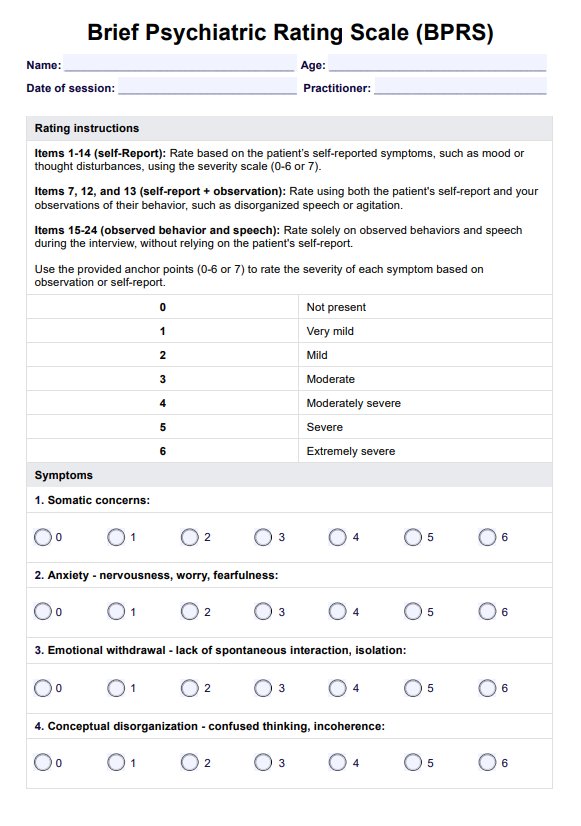The frequency of BPRS administration depends on the clinical setting and the patient's condition. It can be used for initial assessments, periodic monitoring, or before and after specific treatment interventions.

Brief Psychiatric Rating Scale
Gain a deeper understanding of your client's symptom severity by using the Brief Psychiatric Rating Scale (BPRS). Click here to learn more.
Use Template
Brief Psychiatric Rating Scale Template
Commonly asked questions
While the BPRS is primarily designed for adults, modified versions or similar scales may be used for younger populations under the guidance of a child and adolescent psychiatrist.
Yes, proper training and psychiatric assessment experience are required to administer the BPRS and interpret its results effectively.
EHR and practice management software
Get started for free
*No credit card required
Free
$0/usd
Unlimited clients
Telehealth
1GB of storage
Client portal text
Automated billing and online payments











